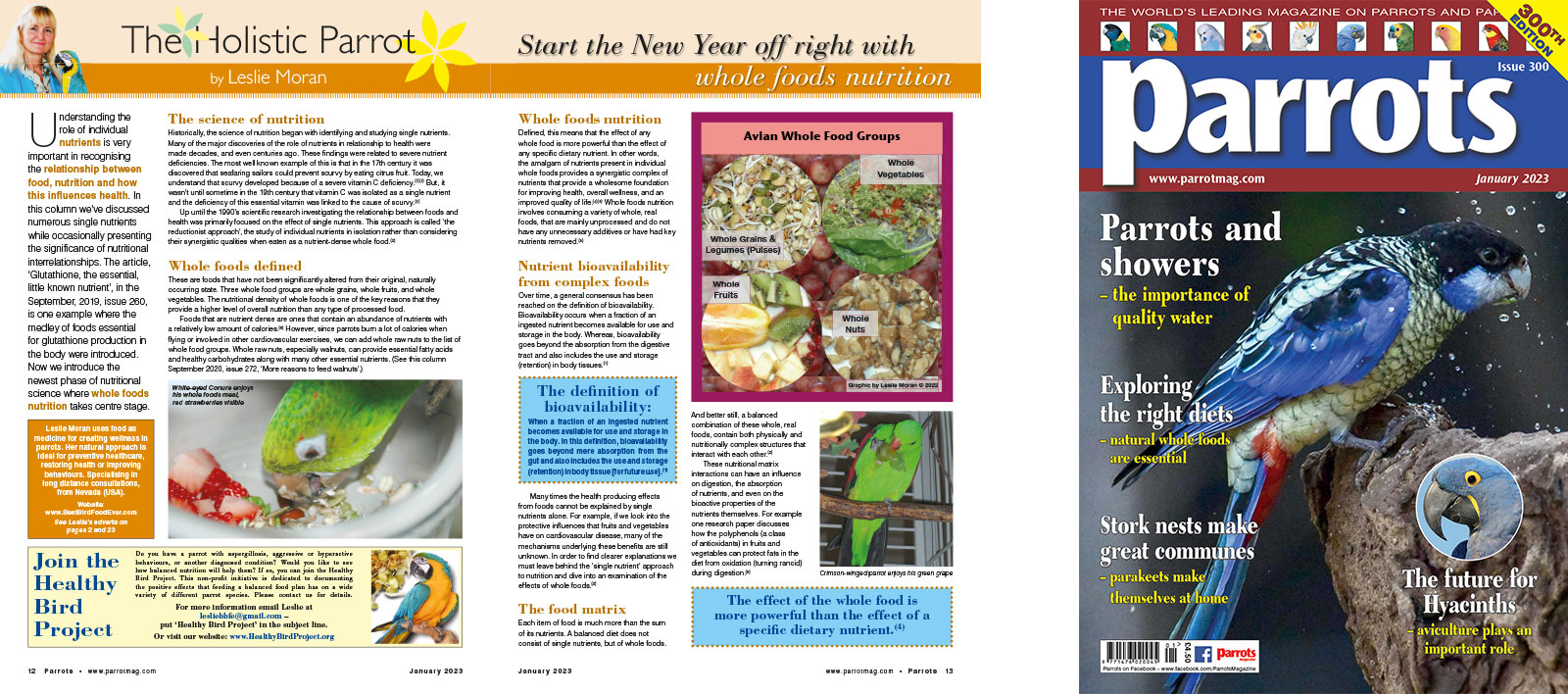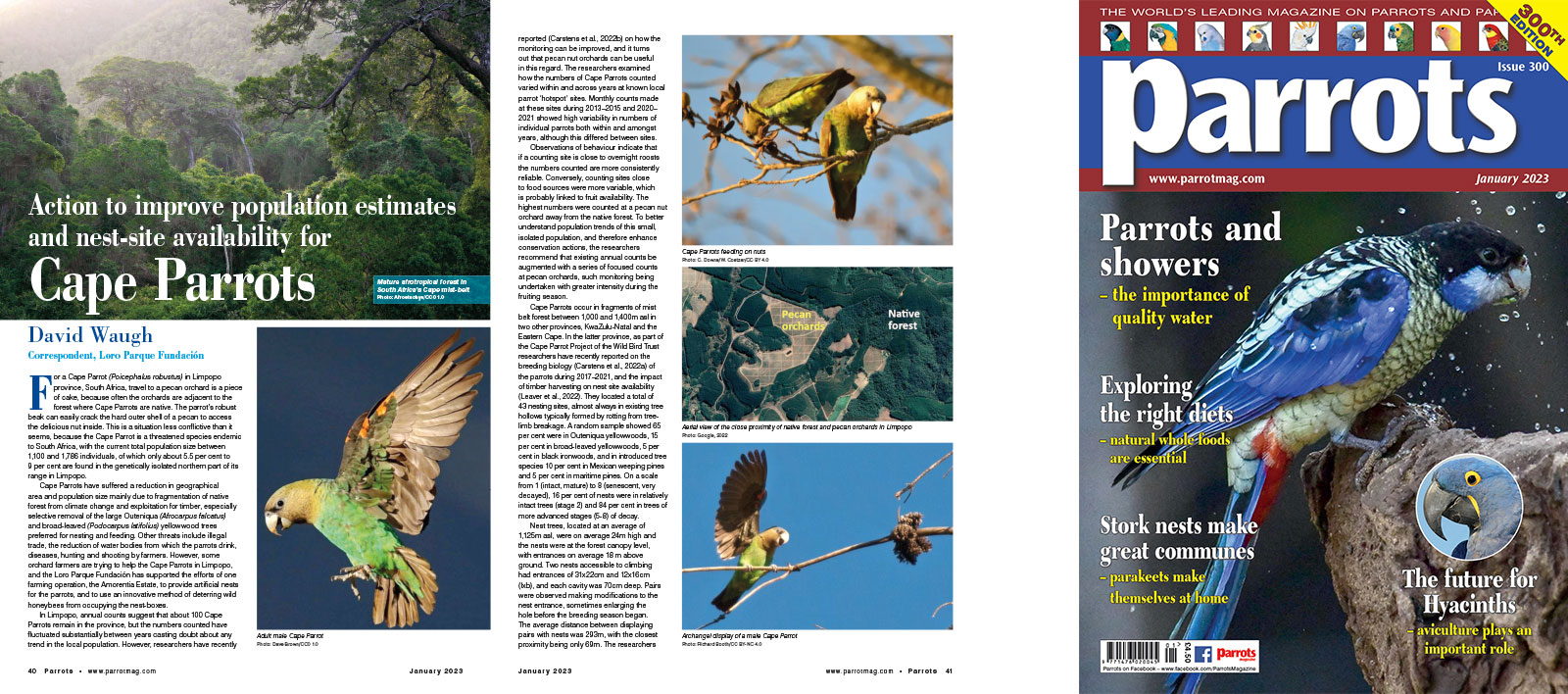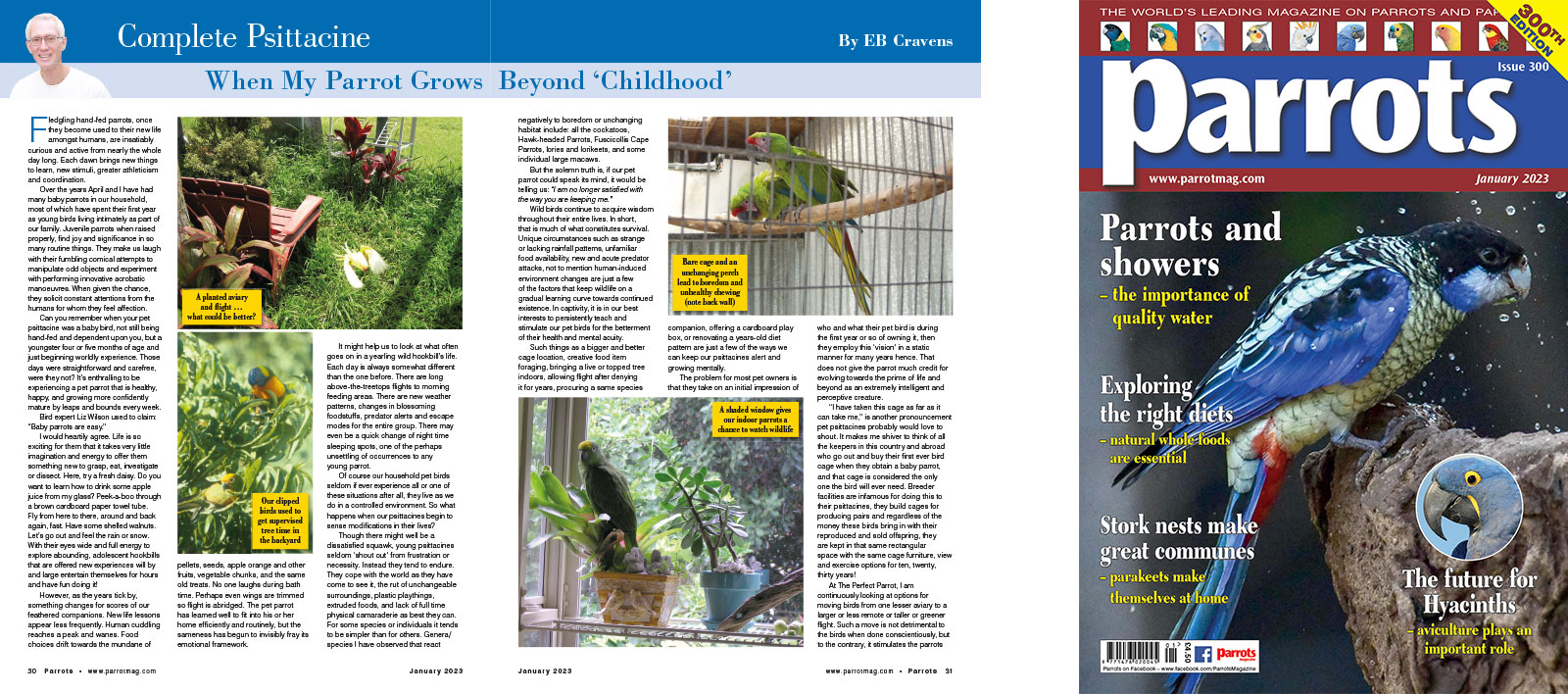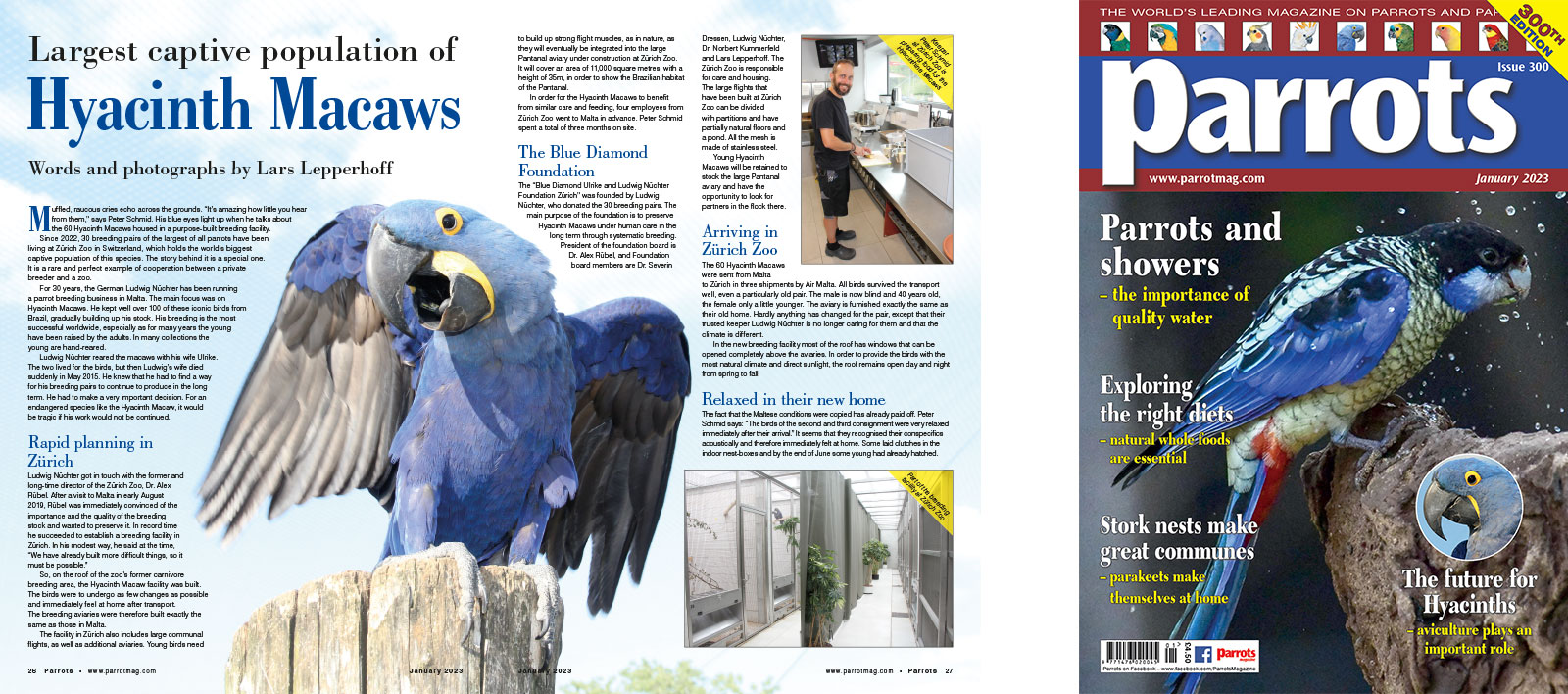
The Holistic Parrot by Leslie Moran
Understanding the role of individual nutrients is very important in recognising the relationship between food, nutrition and how this influences health. In this column we’ve discussed numerous single nutrients while occasionally presenting the significance of nutritional interrelationships. The article, ‘Glutathione, the essential, little known nutrient’, in the September, 2019, issue 260, is one example where the medley of foods essential for glutathione production in the body were introduced. Now we introduce the newest phase of nutritional science where whole foods nutrition takes centre stage.
Historically, the science of nutrition began with identifying and studying single nutrients. Many of the major discoveries of the role of nutrients in relationship to health were made decades, and even centuries ago. These findings were related to severe nutrient deficiencies. The most well known example of this is that in the 17th century it was discovered that seafaring sailors could prevent scurvy by eating citrus fruit. Today, we understand that scurvy developed because of a severe vitamin C deficiency. But, it wasn’t until sometime in the 19th century that vitamin C was isolated as a single nutrient and the deficiency of this essential vitamin was linked to the cause of scurvy.
Up until the 1990’s scientific research investigating the relationship between foods and health was primarily focused on the effect of single nutrients. This approach is called ‘the reductionist approach’, the study of individual nutrients in isolation rather than considering their synergistic qualities when eaten as a nutrient-dense whole food.
Buy Now!

David Waugh, Correspondent, Loro Parque Fundación
For a Cape Parrot (Poicephalus robustus) in Limpopo province, South Africa, travel to a pecan orchard is a piece of cake, because often the orchards are adjacent to the forest where Cape Parrots are native. The parrot’s robust beak can easily crack the hard outer shell of a pecan to access the delicious nut inside. This is a situation less conflictive than it seems, because the Cape Parrot is a threatened species endemic to South Africa, with the current total population size between 1,100 and 1,786 individuals, of which only about 5.5 per cent to 9 per cent are found in the genetically isolated northern part of its range in Limpopo.
Cape Parrots have suffered a reduction in geographical area and population size mainly due to fragmentation of native forest from climate change and exploitation for timber, especially selective removal of the large Outeniqua (Afrocarpus falcatus) and broad-leaved (Podocarpus latifolius) yellowwood trees preferred for nesting and feeding. Other threats include illegal trade, the reduction of water bodies from which the parrots drink, diseases, hunting and shooting by farmers. However, some orchard farmers are trying to help the Cape Parrots in Limpopo, and the Loro Parque Fundación has supported the efforts of one farming operation, the Amorentia Estate, to provide artificial nests for the parrots, and to use an innovative method of deterring wild honeybees from occupying the nest-boxes.
In Limpopo, annual counts suggest that about 100 Cape Parrots remain in the province, but the numbers counted have fluctuated substantially between years casting doubt about any trend in the local population. However, researchers have recently reported (Carstens et al., 2022b) on how the monitoring can be improved, and it turns out that pecan nut orchards can be useful in this regard. The researchers examined how the numbers of Cape Parrots counted varied within and across years at known local parrot ‘hotspot’ sites. Monthly counts made at these sites during 2013–2015 and 2020–2021 showed high variability in numbers of individual parrots both within and amongst years, although this differed between sites.
Buy Now!

Complete Psittacine by Eb Cravens
Fledgling hand-fed parrots, once they become used to their new life amongst humans, are insatiably curious and active from nearly the whole day long. Each dawn brings new things to learn, new stimuli, greater athleticism and coordination.
Over the years April and I have had many baby parrots in our household, most of which have spent their first year as young birds living intimately as part of our family. Juvenile parrots when raised properly, find joy and significance in so many routine things. They make us laugh with their fumbling comical attempts to manipulate odd objects and experiment with performing innovative acrobatic manoeuvres. When given the chance, they solicit constant attentions from the humans for whom they feel affection.
Can you remember when your pet psittacine was a baby bird, not still being hand-fed and dependent upon you, but a youngster four or five months of age and just beginning worldly experience. Those days were straightforward and carefree, were they not? It’s enthralling to be experiencing a pet parrot that is healthy, happy, and growing more confidently mature by leaps and bounds every week.
Buy Now!

Words and photographs by Lars Lepperhoff
Muffled, raucous cries echo across the grounds. “It’s amazing how little you hear from them,” says Peter Schmid. His blue eyes light up when he talks about the 60 Hyacinth Macaws housed in a purpose-built breeding facility.
Since 2022, 30 breeding pairs of the largest of all parrots have been living at Zürich Zoo in Switzerland, which holds the world’s biggest captive population of this species. The story behind it is a special one. It is a rare and perfect example of cooperation between a private breeder and a zoo.
For 30 years, the German Ludwig Nüchter has been running a parrot breeding business in Malta. The main focus was on Hyacinth Macaws. He kept well over 100 of these iconic birds from Brazil, gradually building up his stock. His breeding is the most successful worldwide, especially as for many years the young have been raised by the adults. In many collections the young are hand-reared.
Ludwig Nüchter reared the macaws with his wife Ulrike. The two lived for the birds, but then Ludwig’s wife died suddenly in May 2015. He knew that he had to find a way for his breeding pairs to continue to produce in the long term. He had to make a very important decision. For an endangered species like the Hyacinth Macaw, it would be tragic if his work would not be continued.
Buy Now!




